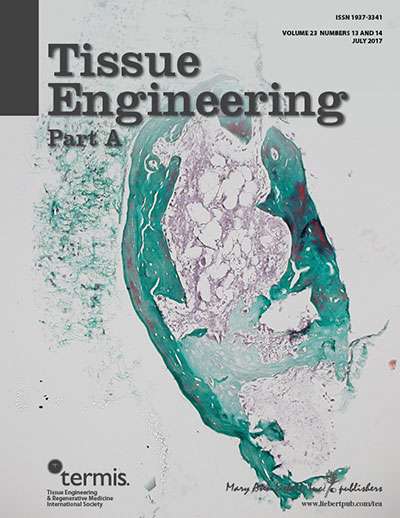Credit: Mary Ann Liebert, Inc., publishers
Unlike the one-size-fits-all, homogeneous approach to tissue engineering for cartilage replacement, a new study reports the ability to encapsulate cartilage-forming chondrocytes and mesenchymal stem cells in 3D hydrogels within a stiffness gradient. Researchers describe the formation of articular cartilage that shows zonal organization of the cells as it appears in native cartilage, as reported in an article be published in Tissue Engineering, Part A.
Danqing Zhu, Pavin Trinh, Dr. Xinming Tong, and Prof. Fan Yang, Stanford University, coauthored the article entitled "Mimicking Cartilage Tissue Zonal Organization by Engineering Tissue-scale Gradient Hydrogels as 3D Cell Niche."
The tissue-scale gradient hydrogels provide a 3D cell growth environment that could be readily adapted to deliver different tissue-specific biochemical and mechanical cues across the gradient. These cues would guide cell behavior, extracellular matrix deposition, and zonal organization of the tissue engineered construct to optimize it for various applications.
"The ongoing sophistication in the tissue engineering of cartilage includes multiple modes of tissue induction, including micromechanical manipulation, as in this work," says Tissue Engineering Co-Editor-in-Chief Peter C. Johnson, MD, Principal, MedSurgPI, LLC and President and CEO, Scintellix, LLC, Raleigh, NC.
More information: Danqing Zhu et al, Mimicking Cartilage Tissue Zonal Organization by Engineering Tissue-scale Gradient Hydrogels as 3D Cell Niche, Tissue Engineering Part A (2017). DOI: 10.1089/ten.TEA.2016.0453
Provided by Mary Ann Liebert, Inc























